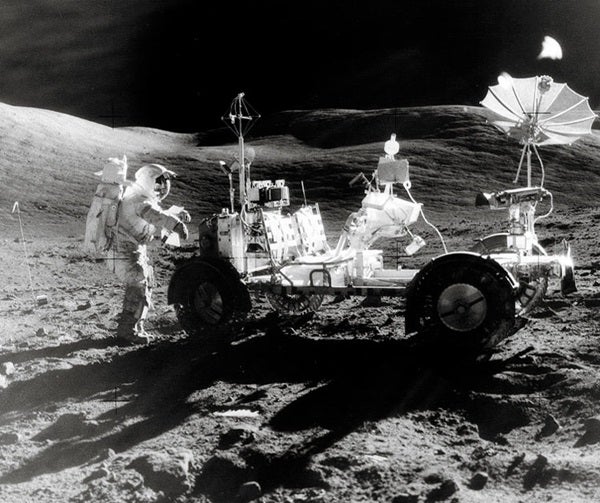Tides caused by Earth gradually slowed the Moon’s spin until its rotation period matched the time it takes to circle Earth. This is why scientists say the Moon is tidally locked, and it’s also why the same side of the Moon always faces us. The Moon’s surface turns at about 13° per day, or, on average, about ½ a degree of lunar longitude each hour. The Moon moves against the background stars at the same rate.
Dividing the Moon’s equatorial circumference (6,786 miles [10,920 kilometers]) by its rotation period (27.32 days) gives the lunar surface’s speed: 10.3 mph (16.7 km/h) at the equator. But Earth’s motion around the Sun adds an extra twist to the terminator’s speed.
In the time the Moon rotates once, Earth and Moon together have cruised about 1/12 of their way around the Sun. Because the lighting gradually changes, the Moon must travel a couple of extra days to recreate the same Sun-Earth-Moon angle. This is why it takes longer for lunar phases to repeat (Full Moon to Full Moon takes about 29.53 days) than it does for the Moon to spin and orbit Earth.
Using this longer interval gives the terminator’s equatorial speed: 9.6 mph (15.4 km/h). For the terminator’s speed at other lunar latitudes, multiply this figure by the latitude’s cosine. For example, midway between the equator and the poles, the terminator moves about 70 percent of its speed at the equator.
For comparison, the lunar rover Apollo astronauts drove on the Moon had a top speed of about 8 mph (12.9 km/h). Although the situation never arose, the rovers weren’t fast enough to outrun lunar nightfall at any of the Apollo landing sites. — FRANCIS REDDY, ASSOCIATE EDITOR










